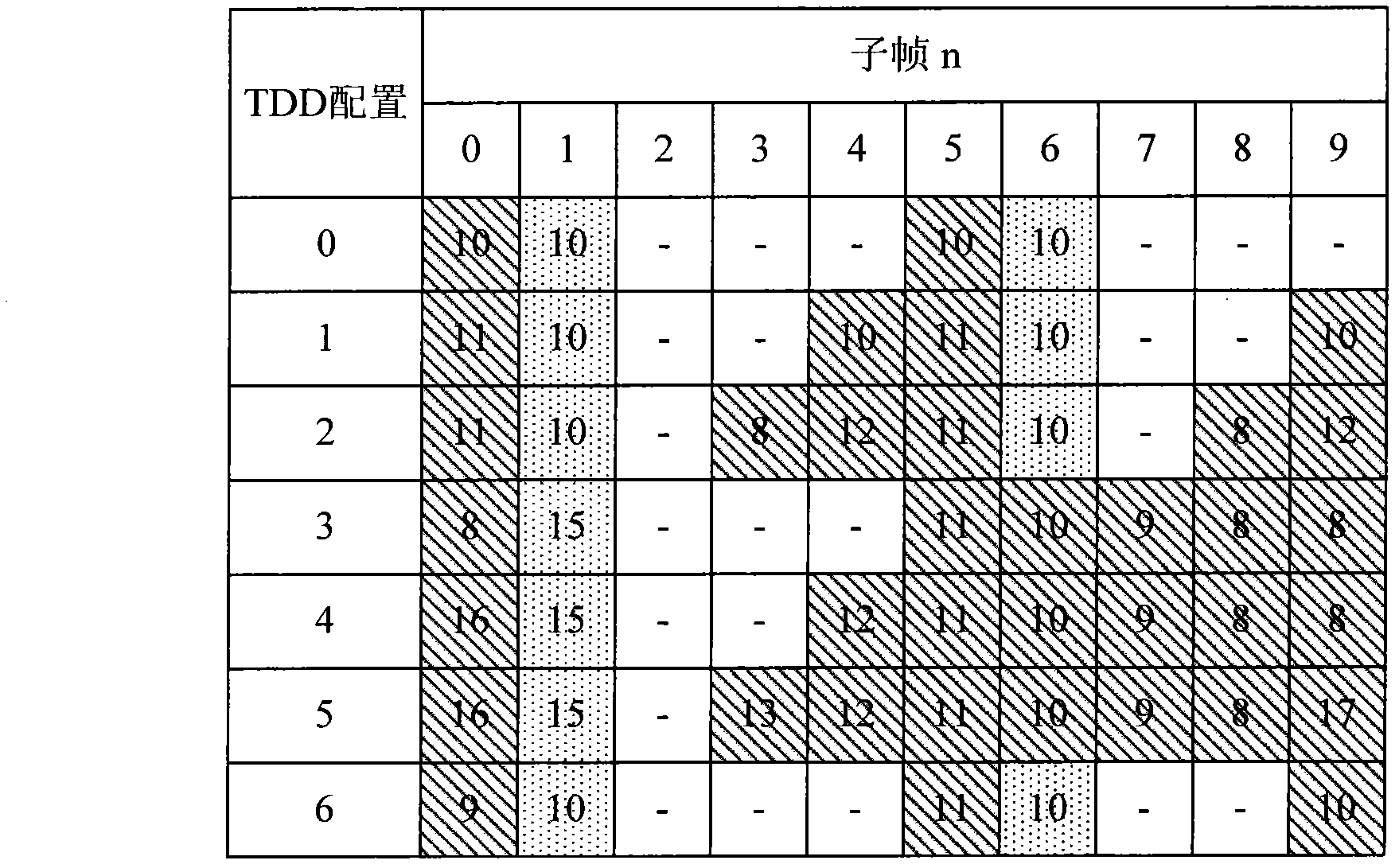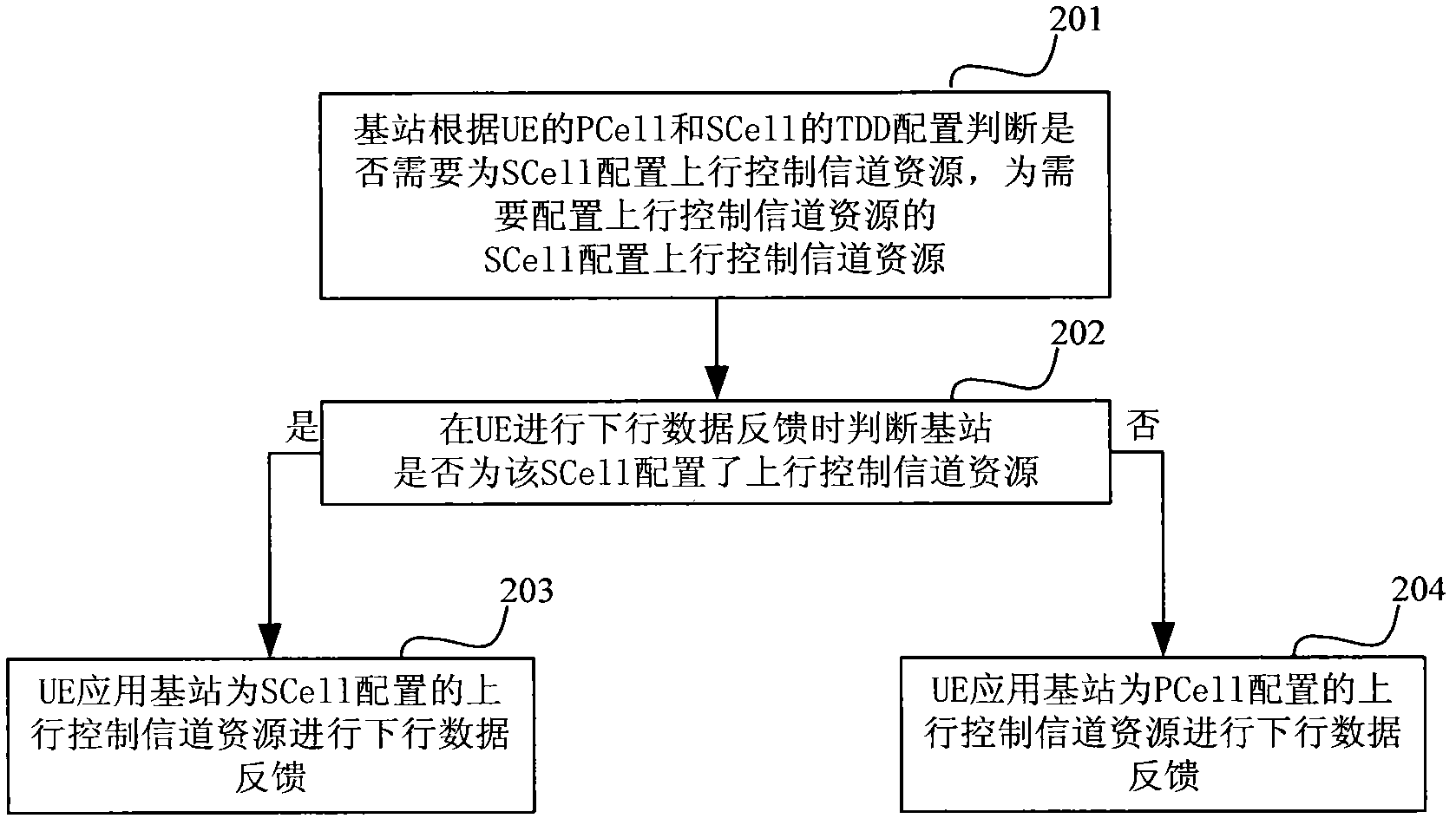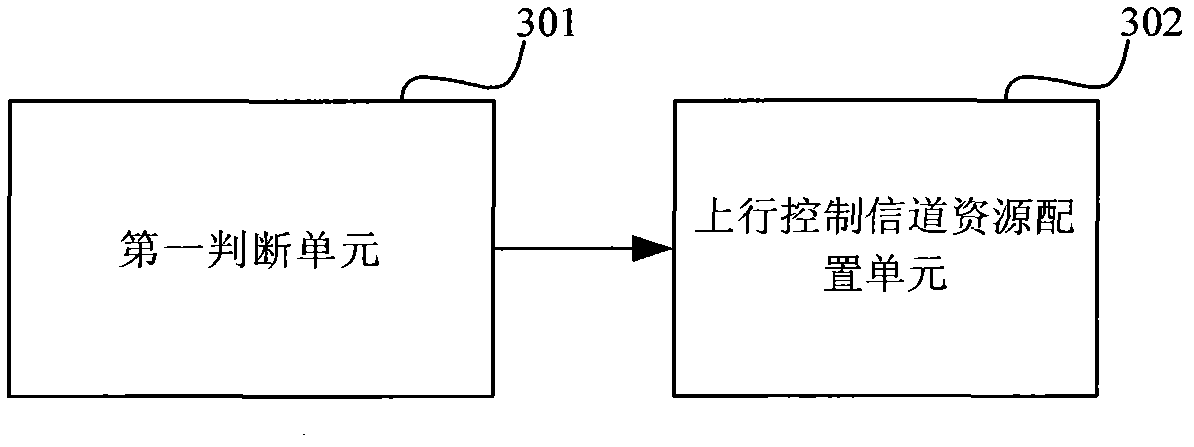Method and device for feeding downlink data
A technology of downlink data and feedback unit, which is applied in the direction of using the return channel for error prevention/detection, wireless communication, electrical components, etc., and can solve the problems of downlink data feedback and uplink subframes that cannot be fully and effectively utilized
- Summary
- Abstract
- Description
- Claims
- Application Information
AI Technical Summary
Problems solved by technology
Method used
Image
Examples
Embodiment 1
[0046] This embodiment provides a downlink data feedback method. In this embodiment, according to the service requirements of the UE, the base station configures one PCell and at least one SCell for the UE. The operation flow of the downlink data feedback method described in this embodiment is as follows: figure 2 As shown, it mainly includes the following steps:
[0047] Step 201: the base station judges whether to configure uplink control channel resources for the SCell according to the TDD configuration of the UE's PCell and SCell, and configures the uplink control channel resources for the SCells that need to be configured with uplink control channel resources;
[0048] Specifically, in this step, the base station can complete the configuration of the SCell uplink control channel resources by generating radio resource control (RRC) signaling including the SCell uplink control channel resource configuration information and sending it to the UE. In this embodiment, the ab...
Embodiment 2
[0083] This embodiment provides another downlink data feedback method. In this embodiment, according to the service requirements of the UE, the base station configures one PCell and at least one SCell for the UE. The operation flow of the downlink data feedback method described in this embodiment is as follows: Figure 4 As shown, it mainly includes the following steps:
[0084] Step 401: the base station configures uplink control channel resources for the SCell;
[0085] In this step, the base station generates RRC signaling including the SCell uplink control channel resource configuration information, and sends it to the UE. In this embodiment, the above-mentioned uplink control channel resources refer to uplink subframes used for downlink data feedback, such as PUCCH. At this time, the base station can jointly complete the configuration of the PUCCH through the two messages of PhysicalConfigDedicated and RRCConnectionReconfiguration.
[0086] Step 402: When the UE perfo...
Embodiment 3
[0111] This embodiment also provides a downlink data feedback method. In this embodiment, according to the service requirements of the UE, the base station configures one PCell and at least one SCell for the UE. The operation flow of the downlink data feedback method described in this embodiment is as follows: Figure 6 As shown, it mainly includes the following steps:
[0112] Step 200: The base station judges whether uplink control channel resources have been configured for other serving cells (PCell or other SCells) having the same TDD configuration as the SCell, and if so, determines that it is not necessary to configure uplink control channel resources for the SCell; otherwise, Execute step 201;
[0113] Step 201: the base station judges whether to configure uplink control channel resources for the SCell according to the TDD configuration of the UE's PCell and SCell, and configures the uplink control channel resources for the SCells that need to be configured with uplin...
PUM
 Login to View More
Login to View More Abstract
Description
Claims
Application Information
 Login to View More
Login to View More - R&D
- Intellectual Property
- Life Sciences
- Materials
- Tech Scout
- Unparalleled Data Quality
- Higher Quality Content
- 60% Fewer Hallucinations
Browse by: Latest US Patents, China's latest patents, Technical Efficacy Thesaurus, Application Domain, Technology Topic, Popular Technical Reports.
© 2025 PatSnap. All rights reserved.Legal|Privacy policy|Modern Slavery Act Transparency Statement|Sitemap|About US| Contact US: help@patsnap.com



